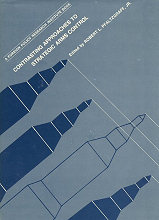
Contrasting approaches to strategic arms control (fülszöveg)
In November 1972 the United States and the Soviet Union entered the second phase of the ongoing Strategic Arms Limitation Talks. This volume, an outgrowth of the Sixth International Arms Control Symposium held in Philadelphia in 1973, represents the first major effort to assess the current status of strategic arms control negotiations between the superpowers. A distinguished group of international security affairs analysts and arms control experts address themselves to the major problems facing contemporary strategic arms control negotiations.
Among the many issue areas considered are the negotiating asymmetries that continue to plague the strategic arms control talks, the bureaucratic dimensions of superpower decision-making on weapon systems, the implications of a SALT-II accord for the U.S.-Soviet military balance, the effects of an ensuing agreement on alliance relationships and nuclear proliferation, and the impact of new technological breakthroughs in the United States and Soviet Union upon international strategic-military stability and strategic arms control negotiations. The contributors assess contrasting superpower and small-power perspectives on strategic arms control.
As this book was going to press the United States and the Soviet Union reached additional agreement, in the Moscow Summit Conference of June 1974, on the further restriction of the deployment of anti-ballistic missile systems as well as a threshold underground test ban treaty. The work has been updated to take account of these and other developments in international security and foreign policy issue areas of significance since the Sixth International Arms Control Symposium.